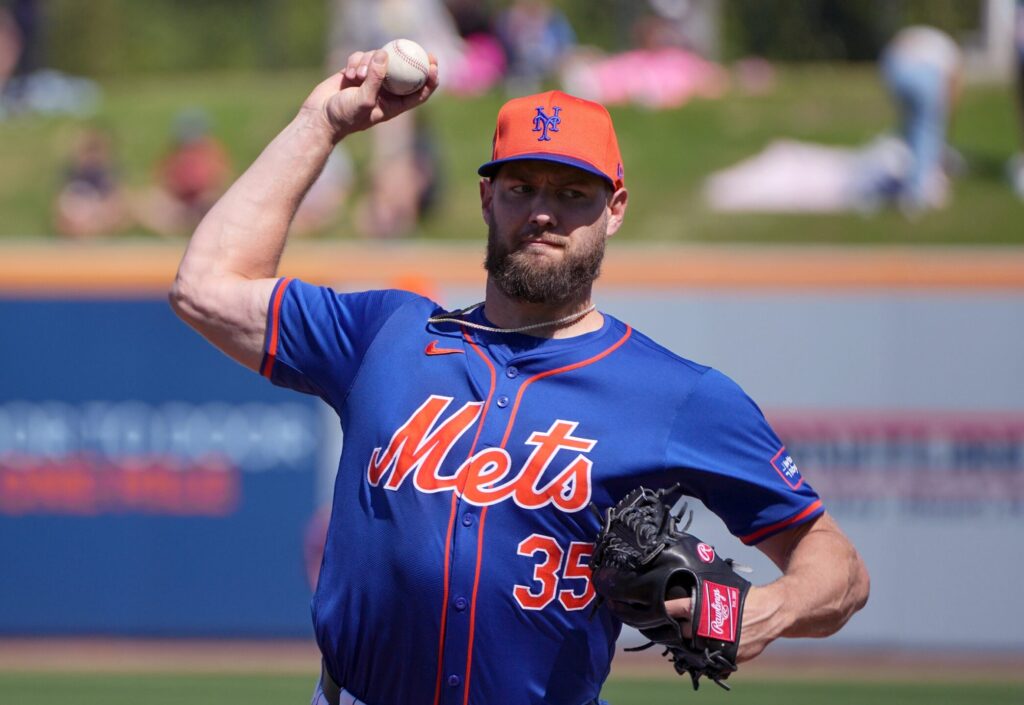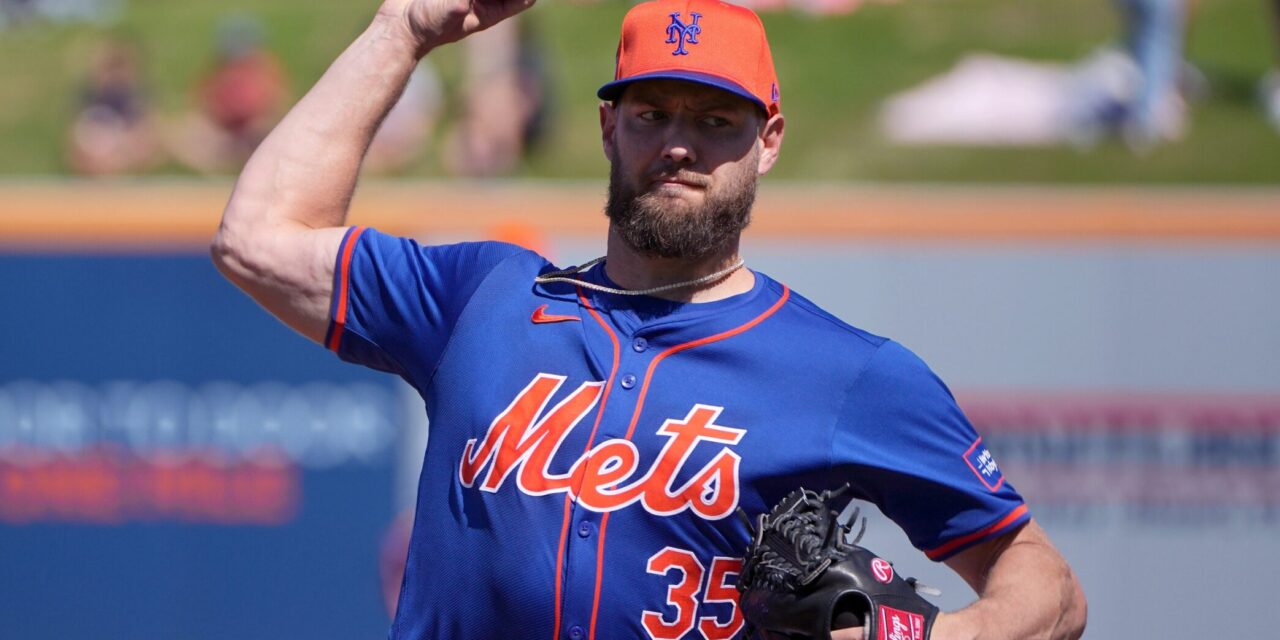In spring training, results are not going to be the end-all, be-all for the veterans who know they have a spot on the Opening Day roster. However, with Kodai Senga on the injured list to begin the season, it’s going to be normal for each spring start by a member of the New York Mets projected rotation to be scrutinized.
On Tuesday, right-handed pitcher Adrian Houser made his first appearance in a spring game for the Mets and he put up a strong first showing against the Miami Marlins. He went two innings, allowed no runs on one hit, and struck out a batter on 23 pitches (15 strikes).
For a road game, the Marlins sent most of their regulars that you would see in a normal starting lineup, such as Luis Arraez, Jazz Chisholm Jr., Avisaíl García, and Nick Fortes. Against this lineup, the key for Houser was getting opposing hitters to hit the ball on the ground and he did just that.

Photo Credit: Jim Rassol-USA TODAY Sports
Out of the six batters that he faced, the 31-year-old got five outs via the groundball, including an inning-ending double play by Trey Mancini in the top of the second. The key pitch that allows Houser to have that success is his sinker. According to Baseball Savant, he used his sinker for 10 of his 23 pitches (43%), and while the velocity on the pitch only averaged 90.8 miles-per-hour, it still produced good results.
After the game, Houser told the media that while he isn’t going to be that flashy pitcher that can light up a radar gun, he is a pitcher that you know what to expect when he’s on the mound, and that is to attack the zone.
“Nothing fancy. Going to try to go out there, attack the zone, work ahead, and get a lot of ground balls. I’m going to need a lot of defense behind me and a lot of help, so I have to keep their guys on their toes. That was the main goal today. Just to attack and work ahead and get ground balls like I wanted to.”
It is very early in the spring, so it is normal for a starter not to have complete command of his pitches just yet, and Houser mentioned that he wants to work on the consistency of his off-speed pitches (slider, changeup, curveball).
Even though Houser has not thrown more than 120 innings in a season each of the last two years, his strength is forcing the ground ball, which he did 46.7% of the time last year.
According to FanGraphs, that was the 28th-highest percentage in all of baseball among pitchers who threw over 100 innings. To put that number into perspective, the only other Met that finished in the top-30 last year was LHP David Peterson (54.6% – 5th in the league).
Once the season begins, the Mets are not going to need Houser to put up insane strikeout numbers or deviate from his style of pitching. All they can ask for is to get innings out of a pitcher projected towards the middle-back of the rotation and to keep producing that soft-to-medium contact. If he can do that, he should have a successful first year in Flushing if he stays healthy.
















